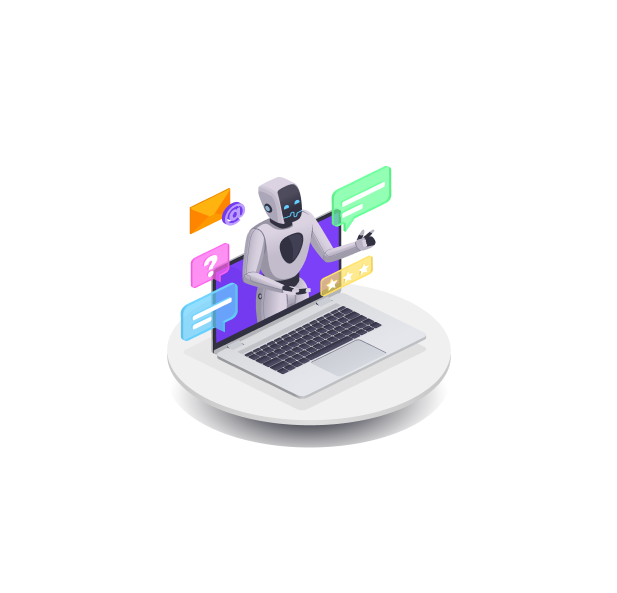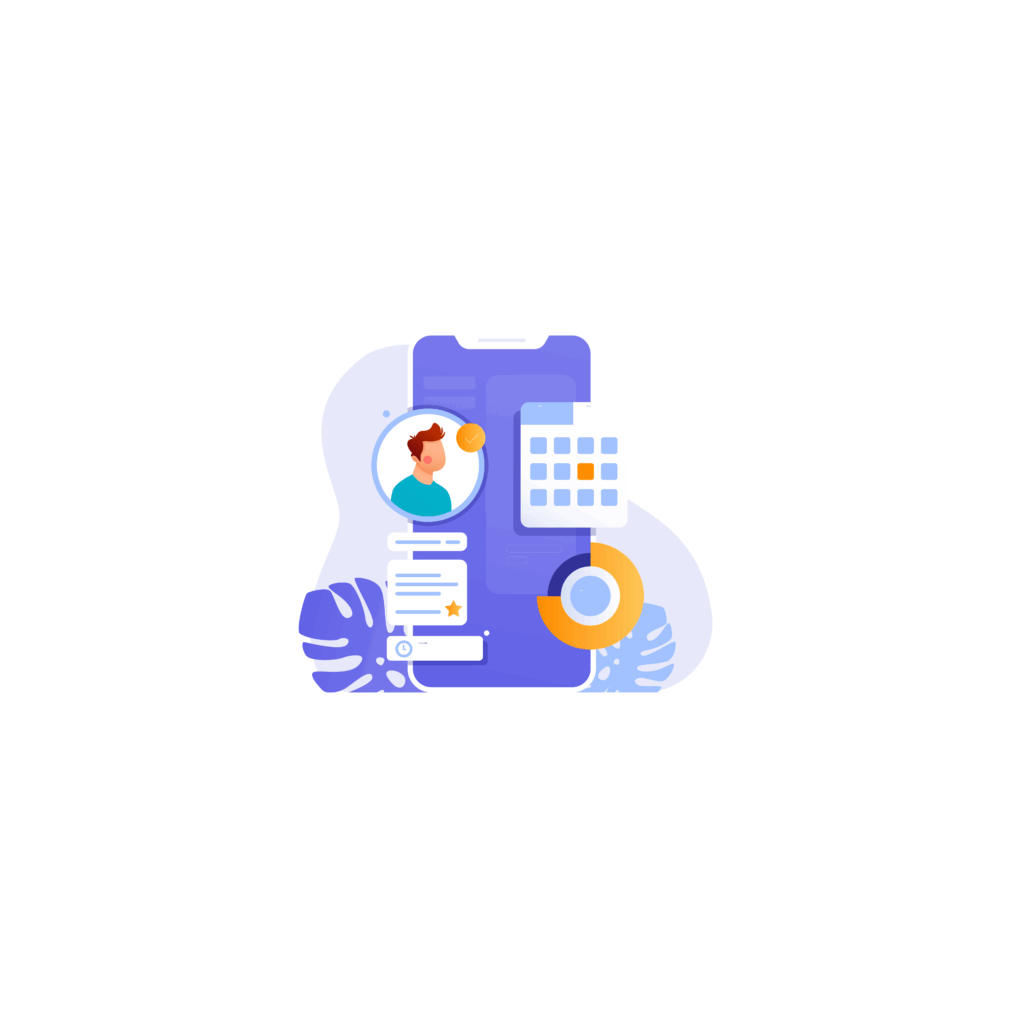Businesses today struggle with inefficiencies, including manual workflows, repetitive tasks, and slow decision-making processes. While traditional automation can handle simple workflows, it cannot handle complex data nor operate fully autonomously.
AI agents are at the forefront of bringing game-changing transformation in the digital workforce. It promises to solve common challenges that most organizations face by automating complex processes and making intelligent decisions through strategic thinking.
The rising demand for personalized customer experiences and advancements in Natural Language Processing (NLP) are driving the adoption of AI agents across industries. With the AI agent market reaching $5.4 billion in 2024, it is projected to grow at a CAGR of 45.8% through 2030.
AI agents are powering everything from customer service to software development. It not only responds as a traditional chatbot, but also plans, acts, learn, and adapts.
This guide explores the AI agent framework and architecture, and how to create an AI agent.
What Are AI Agents?
AI agents are intelligent software systems capable of perceiving their environment, reasoning about data, making decisions, and executing actions autonomously. Unlike traditional chatbots or static automation tools, AI agents operate with a goal-oriented mindset. They don’t just respond to commands; they make decisions dynamically without constant human input.
As we move into an agentic AI era, companies are replacing static automation with intelligent, goal-driven systems.
AI agents are customizable based on your business needs, so it is important to understand what AI agents are and how they work for your business.
Whether you’re a CTO, software engineer, or product builder, understanding AI agents is key to future-proofing your tech stack.
Core Characteristics of AI Agents
Here are some key features of AI agents that set them apart from traditional automation tools.
- Autonomy: Operate independently within defined boundaries without ongoing human input.
- Perception: Processes inputs such as APIs, text, images, or sensors.
- Reasoning: Use large language models (LLMs) and rule-based systems or machine learning to analyze and strategize.
- Memory: Retain short-term and long-term context for context and better continuity.
- Action Execution: Trigger APIs, run code, update databases, or control devices.
- Adaptability: Learn and evolve based on feedback, results, and optimize behavior.
AI agents range from simple chatbots to fully autonomous workflow orchestrators. Next, let’s break down their architecture.
Applications of AI Agent
AI agents are taking over a variety of roles and transforming industries by automating complex, multi-step workflows:
- Customer Support: Autonomous agents resolve queries, solve ticket requests, and escalate when needed (e.g., Intercom Fin).
- Healthcare: Monitor vitals, flag anomalies, and assist with diagnoses.
- Finance: Automate risk assessment, property valuation, fraud detection, and algorithmic trading.
- E-commerce: Handle inventory updates, order tracking, and personalized recommendations.
- DevOps: Debug code, run scripts, and auto-resolve issues (e.g., Code Interpreter Agents).
AI Agent Architecture Explained
At its core, an AI agent lies a powerful feedback-driven loop, similar to how the human brain operates – constantly processing information, making decisions, and adapting.
Here’s how the Perception → Reasoning → Memory → Action loop mirrors the human brain to make autonomous decisions and complete multi-step tasks, without human intervention.
Let’s break down the full architecture layer by layer:
- Perception Layer (Sensory Input)
The perception module focuses on how AI agents ingest data or “see” the outside world. This layer translates raw data to pass on structured information to other modules. The input types include:
Text: Natural language queries, commands, and documentation.
Visual: Images, videos, scanned documents (via OCR).
APIs: Structured data from external apps (e.g., CRMs, databases).
Sensors/IoT: Real-time signals from smart devices or machines.
AI agents are usually integrated with external tools such as Speech-to-Text (Whisper, Deepgram), OCR engines (Google Vision API), web scrapers (Puppeteer, Scrapy), and Monitoring Agents (Prometheus, custom logs)
This layer enables contextual awareness, and the quality in this stage directly affects the relevance and timeliness of autonomous decision-making.
- Reasoning Layer (Cognitive Processing)
Once data is perceived, the decision-making engine kicks in. This is also known as the core intelligence layer, as it involves reasoning, planning, and prioritizing actions.
The AI agent breaks down the problem to identify key requirements. It then checks available data using logic. Based on rules or learned patterns, it picks the best options. Moreover, it also plans for the next steps.
The technology behind AI reasoning involves:
- Large Language Models (LLMs): GPT-40, Claude, and Gemini to help with language-based decisions.
- Fixed logic-based system for predictable tasks, and
- Hybrid AI: It combines flexible LLM thinking and strict rules for better accuracy.
ReAct, Tree of Thoughts (ToT), AutoGPT, and BabyAGI are the most common planning frameworks used in this layer.
- Memory Layer (Retaining Context)
Memory makes the agents intelligent over time. It retains the context, which allows it not to be just reactive in the moment.
This layer includes short-term memory and long-term memory. The short-term memory stores recent inputs, user history, and task context, whereas long-term memory stores facts, past decisions, documents, and customer data.
Memory layer needs tools such as In-memory storage (e.g., Redis), vector databases (e.g., Pinecone, Weaviate), SQL/NoSQL databases, knowledge graphs, and semantic embeddings.
Moreover, AI agents also combine LLMs with real-time external data to enable accurate and up-to-date reasoning with document search and retrieval.
- Action Layer (Executing Tasks)
This is where the agent provides an output, transforming intent into real-world results. It can book hotels or flights based on your calendar, send alerts or summaries across teams, or debug a failing code pipeline.
Here are some of the core capabilities of AI agents:
- API Orchestration: Send/receive data from platforms like Slack, Zapier, and Notion.
- Code Execution: Run scripts, build workflows, and deploy cloud functions.
- System Control: Interact with file systems, schedulers, or DevOps tools.
- Physical Integration: Operate smart devices, drones, or robotic arms.
- Feedback Layer (Learning & Adaptation)
AI agents improve over time based on the outcomes of their actions. It follows a feedback mechanism such as success/failure logs and evaluation metrics, user feedback, manual overrides, and reinforcement learning or rule refinement.
The learning and adaptation layer allows the agent to self-correct and adapt, much like a human employee would after receiving performance feedback.
Top AI Agent Frameworks in 2025
With the growth of AI agents, there are dozens of solutions available for businesses to automate their workflow. However, it is essential to select the right AI agent that fits your specific business needs and technical requirements.
Let’s explore the best AI agent frameworks in 2025 based on formats, from development frameworks and tools to pre-built, enterprise agents.
- LangGraph
It is a stateful framework in the LangChain ecosystem that enables developers to build complex, controllable agents. It is popular for maintaining conversation state across sessions and handling multi-agent workflows seamlessly. Furthermore, it also includes LangSmith for monitoring and debugging.
Use Case: Klarna was able to reduce customer support resolution times by 80% using LangGraph.
- AutoGen
AutoGen, developed by Microsoft, supports multi-agent collaboration through an event-driven architecture. It orchestrates multiple agents for collaborative workflows and integrates with leading LLMs.
Autogen can scale based on your business needs as it offers services from simple prototypes to enterprise systems.
Use Case: Novo Nordisk for streamlining data science workflows.
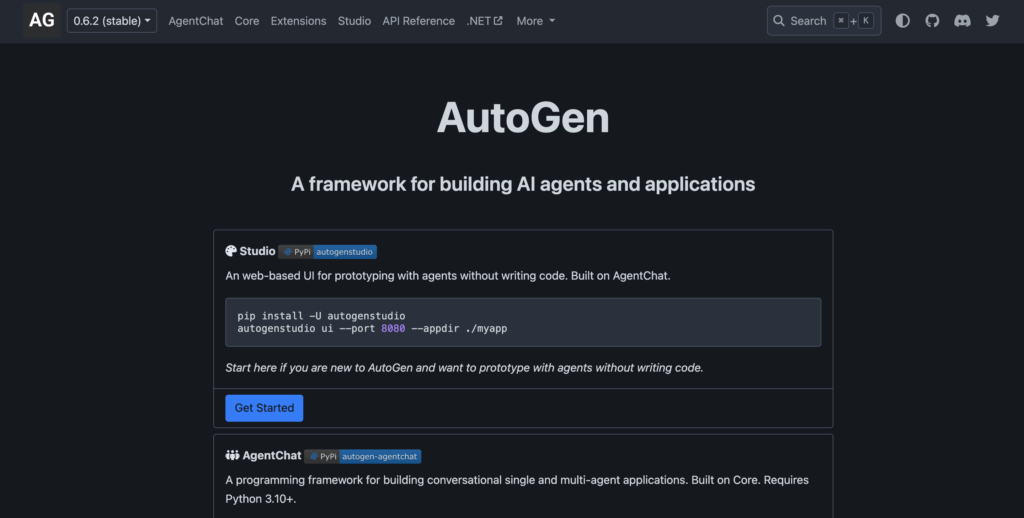
- CrewAI
CrewAI simplifies multi-agent orchestration by assigning specific roles and responsibilities.
This AI agent framework is mostly popular among teams as it allows role-based collaboration between agents. You can leave it in autopilot mode as it works without heavy dependencies. Best of all, CrewAI is lightweight and easy to deploy.
Best for: Marketing automation and customer service.
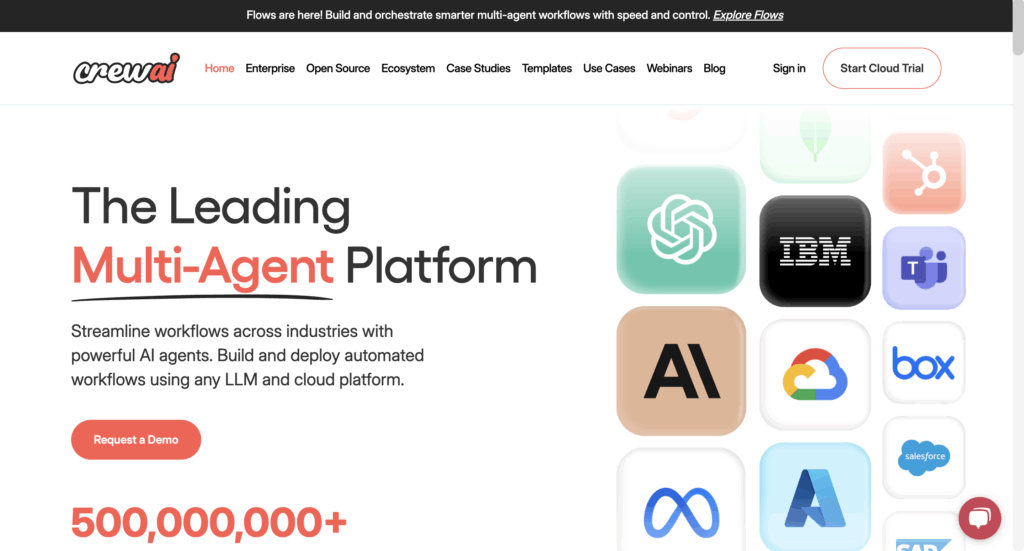
- AutoGPT
AutoGPT was one of the early breakthroughs in autonomous AI and remains a popular open-source tool in 2025 for experimentation and prototyping.
It can chain multiple tasks without manual intervention as it has autonomous goal-seeking capabilities. It is mostly popular among hobbyists and small research teams.
- Kubiya
Kubiya focuses on enterprise-grade agent orchestration with robust security and compliance features.
It strongly emphasizes security and privacy. This AI agent is popular even among non-technical users as it has no-code and low-code options for fast adoption.
You can integrate Kubiya with enterprise SaaS tools (like Salesforce, Jira). Moreover, you can opt for AI copilots tailored for IT and operations teams.
Use Case: Used by Fortune 500 companies for automating IT workflows.
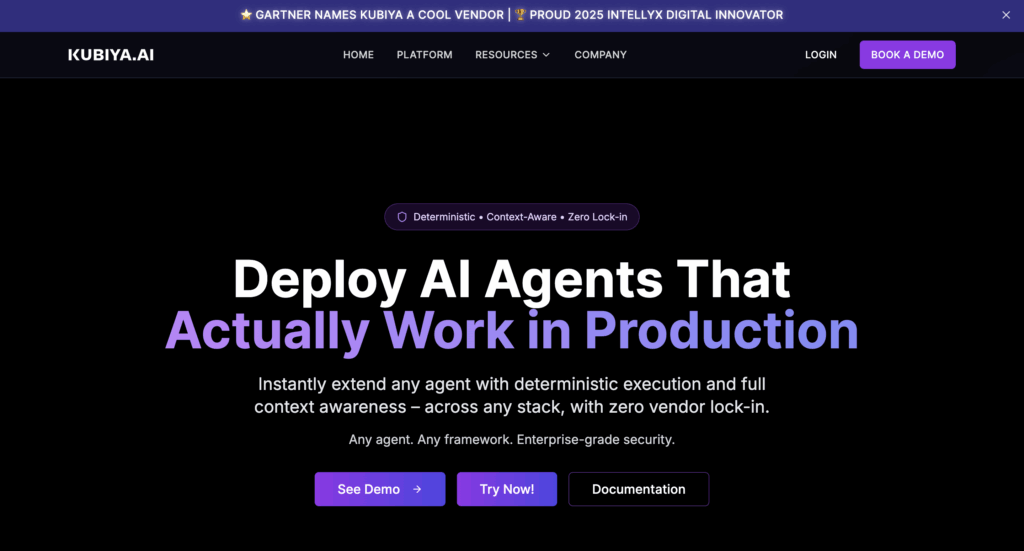
- Operator
Operator is designed for task automation across web and desktop environments, making it ideal for replacing human-in-the-loop processes.
Since Operator provides browser-based automation with an AI brain, it is mostly used to handle repetitive tasks like form filling, data extraction, and reporting. You can easily deploy an operator without heavy infrastructure.
It is best for teams wanting AI-powered virtual assistants.
Use Case: Startups use Operator to automate admin-heavy tasks, freeing up employee time.
How to Create an AI Agent in 2025? (Step-by-Step Guide)
AI agents are no longer futuristic concepts. Businesses that adopt AI agents as an additional resource are experiencing 50-70% time savings in operational workflows and reduced overhead through the automation of repetitive tasks.
Here’s how you can build your AI agent.
Step 1: Define the Goal
Start with why.
To build a successful AI agent, you need a clearly defined purpose. Here are a few questions to ask yourself
- What problem is the agent solving?
- Who are the primary users?
- What outcomes should the agent achieve?
AI agents can handle everything from resolving support tickets and escalating complex cases to scanning the web for competitor insights and delivering actionable summaries.
Define a specific, measurable objective to ensure your architecture, tools, and integrations align perfectly with your needs.
Step 2: Choose the Right Framework
The way your AI agent will process inputs, make decisions, and execute actions depends on the framework you select. We’ve already mentioned the AI agent frameworks that are popular in 2025.
Here’s a summary table that shows the best framework based on their purposes.
| Framework | Best For | Key Features |
| LangChain | Chaining LLMs for task automation | Supports multi-step workflows, memory modules, and prompt engineering for nuanced tasks. |
| AutoGen | Multi-agent collaboration | Enables orchestration of multiple agents working together to accomplish complex goals. |
| CrewAI | Distributed teams of agents | Offers role-based coordination, making it ideal for enterprise-scale agent teams. |
| Kubiya | Task-focused automation (e.g., DevOps, Slack workflows) | Prioritizes API integrations, workflow automation, and robust security features. |
You can also combine multiple frameworks for greater scalability and flexibility. For instance, to enable robust enterprise-grade workflows, you can opt for LangChain for micro-level task orchestration alongside AutoGen for macro-level agent collaboration.
Step 3: Selecting Tools and Integrations
The power of your AI agent lies in the systems it can access. Define early on which external tools, APIs, and platforms your agent will need to integrate with.
Common integrations include:
- APIs: Slack, Notion, Jira, Gmail, HubSpot, Salesforce.
- Web Scraping: For dynamic data collection from public websites or portals.
- Databases: MySQL, MongoDB, and Firebase for storing structured or unstructured data.
- Vector Stores: Pinecone, Weaviate, or FAISS for semantic search and long-term memory management.
If you want to build a customer support agent, it may require:
- Gmail API for managing inbound and outbound emails.
- Slack API for notifying support teams in real-time.
- CRM API (e.g., Salesforce) for updating customer interaction history.
Key Consideration: Design with data security and compliance in mind. Ensure all API connections follow OAuth or other secure authentication methods.
Step 4: Configure Memory and Reasoning
One of the major differences between traditional chatbots and modern AI agents is the use of memory and advanced reasoning capabilities.
Memory Configuration:
- Short-Term Memory: Maintains context during a single interaction session.
- Long-Term Memory: Retains knowledge across sessions for personalized interactions over time.
- Vector Databases: Store and retrieve semantic embeddings for contextual understanding. Popular options include Pinecone, Weaviate, and FAISS.
These capabilities allow AI agents to move beyond static interactions and deliver highly contextual, intelligent responses.
To empower your AI agent with decision-making abilities, you also need to configure reasoning engines. Leverage state-of-the-art LLMs like GPT- 4.5, Claude 4, and Gemini 2.0 for natural language understanding. Similarly, for complex workflows, implement hybrid reasoning systems combining neural networks and symbolic logic for complex workflows. Augment with symbolic AI or rule-based engines for tasks requiring deterministic decision-making.
Most of all, when building AI agents, always establish clear data retention policies and ensure compliance with regulations like GDPR, HIPAA, or other applicable regulations to protect user data and maintain trust.
Step 5: Test, Optimize, and Deploy
Before deploying, rigorously test your AI agent to ensure it operates reliably in production environments.
Some of the key testing steps include:
- Simulate real-world use cases and edge cases to evaluate robustness.
- Conduct A/B testing to optimize user interactions.
- Validate against performance metrics such as:
- Task success rate.
- Response accuracy.
- Error frequency and recovery.
Create an optimization module that can help make your AI agent intelligent over time.
- Enable feedback loops by collecting user input for continuous learning and improvement.
- Adjust tool access to enforce the principle of least privilege, preventing accidental overreach.
Deploy the agent on your preferred platforms, whether web, mobile, or embedded systems. Use containerization (Docker, Kubernetes) for scalability and monitoring tools (Prometheus, Grafana) for real-time performance tracking.
The Future of Autonomous Workflows
AI agents are a powerful lever for businesses to achieve unprecedented operational efficiency. By combining memory, reasoning, and adaptability, they act as tireless digital workers that free up your human teams for high-value initiatives.
Companies adopting AI agents today are reducing costs, accelerating workflows, and delivering superior customer experiences.
Ready to Build your AI Agent?
AI agents are now a practical tool rather than just a concept. It can transform how your modern organization operates. From automating repetitive tasks to making strategic decisions in real time, these intelligent systems are redefining workflows across industries.
You can either hire AI expertise to build an agent for you or outsource to a software development company to create an AI agent based on your requirements.
Modern AI agents can handle everything from customer service inquiries to orchestrating enterprise-wide operations. Yet their success depends on clear goals, the right architecture, and thoughtful implementation.
With the right approach to creating an AI agent, it can act as an intelligent digital colleague that can deliver measurable business outcomes.
